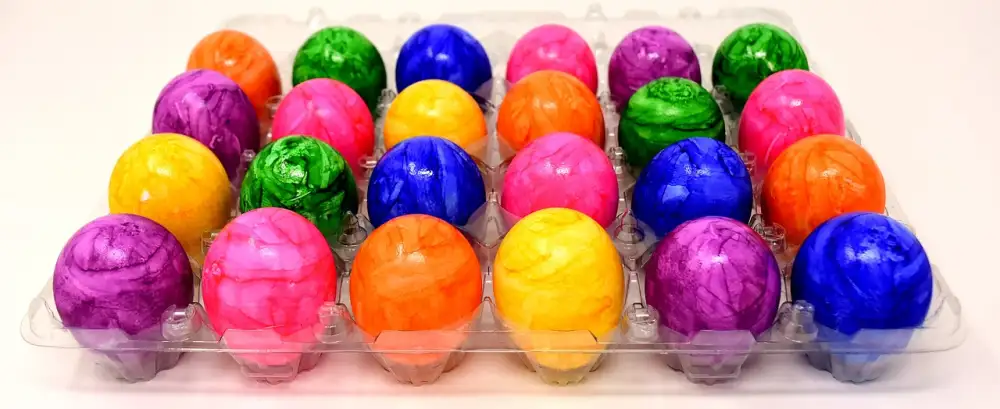Delight Your Senses with a Scrumptious Easter Bread Recipe for a Festive Home Celebration

Easter bread, also known as "Pasca" or "Tsoureki," is a traditional sweet bread enjoyed during the Easter season in many cultures around the world. This special bread is often rich in flavor, adorned with decorative touches, and carries deep symbolic meaning related to rebirth and renewal. Its delightful aroma fills homes with warmth and anticipation, making it a cherished part of Easter celebrations for families and communities alike. Join us on a journey to discover the history, significance, and art of making this delectable treat that will surely elevate your Easter festivities.
History and Significance of Easter Bread
Easter bread, also known as "Pascha" or "Paska," holds a rich history and significant symbolism in various cultures around the world. This traditional bread is often enriched with ingredients like eggs, butter, and sugar, symbolizing the end of Lenten fasting and the celebration of new life. In Eastern European traditions, Easter bread is intricately braided to represent the Holy Trinity or adorned with symbolic decorations like crosses or flowers. The act of baking and sharing Easter bread signifies unity, renewal, and the joy of Easter festivities among families and communities for centuries.
Ingredients Required for Easter Bread
When preparing a delicious Easter bread, you'll need the following key ingredients: flour, sugar, yeast, milk, butter, eggs, salt, and your choice of flavorings such as citrus zest or spices like nutmeg and cinnamon. Traditional recipes may also call for dried fruits like raisins or currants, as well as nuts such as almonds or walnuts. Some variations include adding a glaze made from powdered sugar and milk to give the bread a shiny finish. These simple yet essential components come together to create a festive and flavorful Easter treat that is sure to delight your family and guests alike.
Step-by-Step Instructions for Making Easter Bread
1. In a mixing bowl, combine warm milk, sugar, and yeast. Let it sit for 5-10 minutes until frothy.
2. Add in the flour, eggs, butter, salt, and any additional flavorings like citrus zest or spices.
3. Knead the dough until smooth and elastic, then cover and let it rise in a warm place for about an hour.
4. Punch down the risen dough and divide it into three equal parts.
5. Roll each part into a long rope and braid them together to form a loaf.
6. Place the braided loaf on a baking sheet lined with parchment paper and let it rise again for another 30 minutes.
7. Preheat your oven to 350°F (180°C) while the bread is rising.
8. Brush the risen loaf with an egg wash for a golden finish before baking for 25-30 minutes until golden brown.
9. Allow the Easter bread to cool before slicing and serving.
Enjoy your homemade Easter bread with loved ones during this festive season!
Tips and Tricks for Perfecting Your Easter Bread
To perfect your Easter bread, ensure your yeast is fresh and active for a good rise. Knead the dough thoroughly to develop gluten for a light texture. Let the dough rise in a warm, draft-free place until doubled in size. Avoid adding too much flour while kneading to prevent a dense loaf. Brushing the bread with an egg wash before baking gives it a beautiful golden crust. Lastly, allow the bread to cool completely before slicing to maintain its moisture and flavor.
Serving Suggestions and Pairings
Once your Easter bread is beautifully baked and ready to be enjoyed, consider serving it sliced with a dollop of sweet butter or cream cheese. The rich flavors of the bread pair wonderfully with a hot cup of coffee or tea, enhancing the overall experience. For a more indulgent treat, try drizzling some honey or sprinkling powdered sugar on top of each slice. Additionally, you can elevate your Easter celebration by serving the bread alongside fresh fruits like berries or citrus slices for a burst of freshness that complements the sweetness of the bread perfectly. Remember to enjoy this delightful treat with loved ones and create lasting memories around the table this festive season.
Easter bread is not just a delicious treat; it's a symbol of tradition, celebration, and togetherness. By taking the time to bake this special bread, you are participating in a centuries-old custom that brings families together during the Easter season. The aroma of freshly baked bread filling your home, the joy of sharing a slice with loved ones, and the satisfaction of creating something beautiful with your own hands all contribute to making Easter bread more than just a recipe – it's an experience. So this Easter, gather your loved ones, roll up your sleeves, and embark on a culinary journey that will not only delight your taste buds but also create lasting memories for years to come. Happy baking!
Published: 30. 04. 2024
Category: Food



